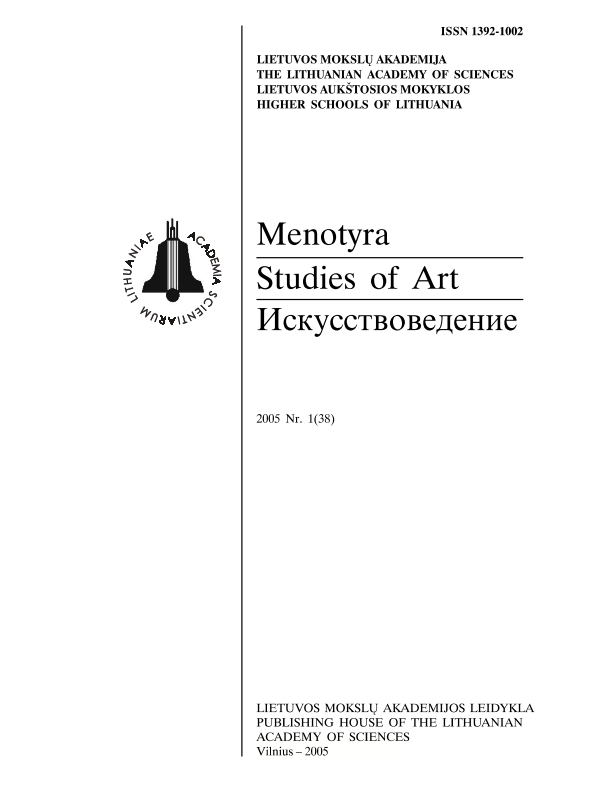Neatpažintas M. K. Čiurlionio muzikos ciklas (1906 m., spalio 1-2 d., Druskininkai)
An unrecognised cycle by Mikalojus Konstantinas Čiurlionis (October 1-2, 1906, Druskininkai)
Author(s): Rimantas JaneliauskasSubject(s): Cultural history, Music, Recent History (1900 till today)
Published by: Lietuvos mokslų akademijos leidykla
Summary/Abstract: The aim of the present work was to identify an untitled cycle of music of M. K. Čiurlionis, the great Lithuanian composer, not planned in advance and left aside after its birth. Thus, the three pieces for piano written in Druskininkai in October 1-2, 1906 were the object of the present investigation. The probability of an unrecognized cycle above all is associated with the peculiarities of the composer's creative process. Čiurlionis, particularly in his late period of creation, used to frequently leave his works untitled. Besides, the composer would write very intensively, in a short time and the same place. This kind of creative inspiration would last for mere several days: he used to write approximately one work a day.The following features of "unrecognized cycle" are directly connected with the peculiarities of the composer's creative process: spontaneous duration (two days of writing a cycle), the absence of titles, the consecutive chronology of works. These features in part indicate the probability of the cycle...Owing to the fact that Čiurlionis had never broken his relations with the tonality characteristic of classical-romantic music, the structural thematic and harmonic criteria are of paramount importance for the disclosure of the cycle. The best evidence that all the three works are connected by thematic links is their initial motifs. All the motifs have a common third sound ambit which in Part I is intoned downwards (thesis), in Part II upwards (antithesis), and in Part III is winding (synthesis). Even the closer thematic links show a comparison of the sonata-type forms, sections of Part I with the other parts of the cycle. This explains why the thematic material of the subordinate section in Part I is elaborated in Part II and the development section respectively in Part III of the cycle.The peculiarities of the cycle are also witnessed by the logical links of the key plan. Of particular value is the reverse character of the key - modal links of Part I and the whole cycle. Besides, the ends of all the parts are marked by the tonics with a sixth showing that the key plan of the cycle principally emerges from a primary diminished harmony, which structures the principal section of Part I.The structural analysis of the works allows to call the "unrecognized cycle" as a three-part sonata-cycle work.
Journal: Menotyra
- Issue Year: 2005
- Issue No: 1(38)
- Page Range: 47-53
- Page Count: 7
- Language: Lithuanian

